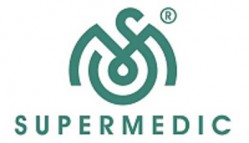The patient can wear Pheezee, a pocket-sized wearable device by Startoon Labs while participating in physiotherapy sessions. The gadget provides electromyogram (EMG) and range of motion (ROM) biofeedback in real time for the engaged muscle. The gadget wirelessly links to an Android phone or tablet to display reports. Whenever necessary, the physiotherapist can view progress reports broken down by sessions, weeks, months, and overall.
Pheezee provides evidence in support of the remedy. Both at home and in the clinic, the therapist makes use of it. Pheezee is suitable for evaluating the spinal cord, and upper and lower limbs. It is a helpful tool for tracking and monitoring a patient's recovery in real-time. At the conclusion of each session, it generates reports that can be given to the patients. Using the pheezee dashboard, you can monitor the progress of each of your patients.
How Does Pheezee Works?
Using EMG and other metrics like the range of motion, repetition counting, etc., Pheezee measures a patient's muscle reaction to the nerve stimulating the muscle. Pheezee features a built-in ARM microcontroller for data collection and processing as well as motion sensors to measure a range of movements. Pheezee is made up of two modules, one worn above the ankle and the other below. To measure ROM in real-time when working out, the device is wirelessly connected to an Android phone. The gadget has the lowest count of 1 degree for ROM measurement. Twenty healthy individuals underwent dorsiflexion and plantar flexion tests to measure their range of motion (ROM). Comparing ROM readings to a conventional CE-certified goniometer and a digital goniometer app, Goniometer Records discovered that ROM measurements had a 96 percent accuracy rate (released by the Indian Orthopedic Research Group).
Pheezee provides -
∙ Using muscular contractions as a gauge for biofeedback.
∙ Measures of the dynamic range of motion.
∙ Sessions-specific reports.
∙ Data for incremental recovery.
∙ the patient is reminded when they attain their goals.
∙ Report creation and distribution to medical professionals and caregivers.
∙ when the patient is not in rehab, remote monitoring.




